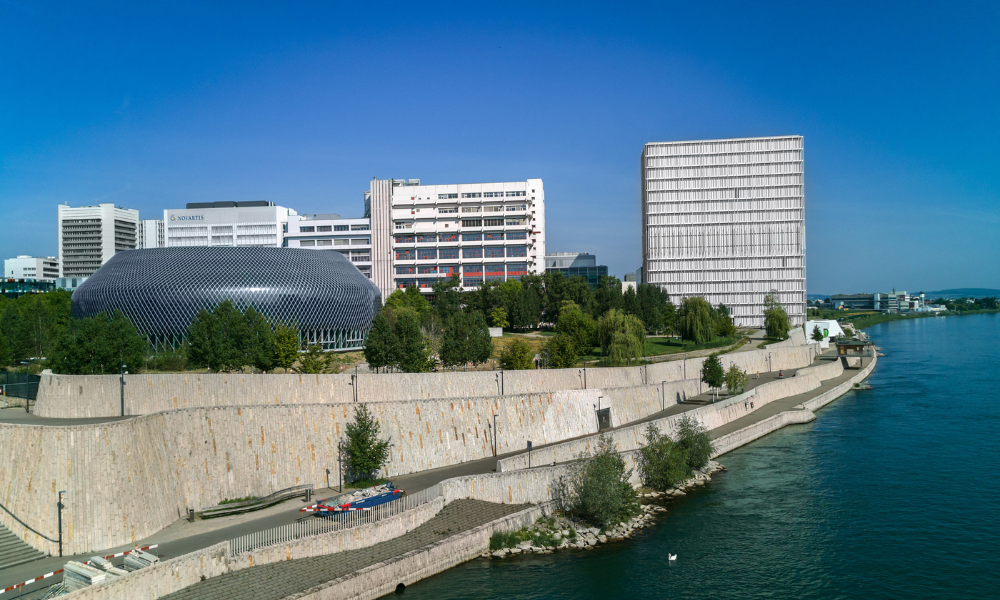They say that a change is as good as a holiday – perhaps it’s time to apply that logic to your own career? The answer may be postgraduate study, of which the shining jewel remains the MBA
.JPG)
They say that a change is as good as a holiday – perhaps it’s time to apply that logic to your own career? The answer may be postgraduate study, of which the shining jewel remains the MBA
The MBA is still one of the most valuable postgraduate degrees for a professional to have in their educational arsenal – not just because of the weight an MBA designation adds to job applications but because of the relevancy of the knowledge and skills acquired throughout the study process. On top of that, the networking opportunities an MBA degree affords students is unparalleled.
And when it comes to MBA programs in the Asia-Pacific region, Singapore is the leader. Three of Singapore’s universities placed in the top 10 of the QS Global 250 Business Schools Report 2017, with INSEAD’s Singapore campus at the top.
This strong result was repeated in the Global MBA Ranking 2017, published by the Financial Times (FT), in which INSEAD (France/Singapore/Abu Dhabi) also came out on top. Nanyang Business School and the National University of Singapore Business School also made it to the FT top 50.
Staying ahead of the game
MBAs have had to move with the times in order to stay relevant in a rapidly changing business world.
“In my view, an MBA education is increasingly important in our fast-changing world today, where new perspectives, insights and skills are needed more than ever before,” says Elaine Tan, group director of marketing, East Asia Institute of Management (EASB). “The discussion is not about whether an MBA education is still valuable, but rather what learning content a modern MBA should have.” Tan adds that in today’s age of ‘digital Darwinism’ – in which technology and our society are evolving faster than any organisation could naturally adapt, and disruptive innovations are rapidly becoming the mainstream – a company’s “fitness for ongoing change” has become an essential capability for survival.
“MBA programs that produce effective leaders today need to be regularly reviewed and modernised so as to elevate its relevancy with the contemporary demands of our business world,” says Tan. She adds that the curriculum of a good MBA today should bring in different disciplines, including economics, sociology, philosophy and many other social sciences, as well as important modules such as change management, talent management, and new media literacy, to name just a few.
Contemporary MBAs differ from traditional programs in at least two key respects. First, rather than treat each topic area as separate, today’s best programs focus on integrating knowledge around solving concrete, real-life business problems.
Second, there has been a growing demand for programs that allow candidates to combine the breadth of the traditional MBA curriculum with the depth of a specialisation in a particular area like technology or change management.
Indeed, 2016 research covering 1,000 students at 35 business schools worldwide highlighted just how rapidly the MBA space is changing. The resulting report, Time for MBA 2.0, produced by education consultants CarringtonCrisp, with support from the European Foundation for Management Development, pointed to a move away from the traditional two-year MBA towards options such as e-learning and blended learning. In addition, it said, the popularity of specialist MBAs has “soared” to the point that interest in specialist and generalist MBAs is more or less equal – the most popular specialist MBAs are finance, international management, IT and entrepreneurship.
Students were also found to have high expectations that a business school would assist them in finding a job upon graduating. The top five career services that prospective students expected to be provided were career coaching, a mentorship program, career development workshops, consulting projects with a company, and a personalised career plan.
The report also shed light on what skills students expect to develop from MBA study. At the top of the list was leadership, followed by critical thinking skills, entrepreneurialism, negotiation skills and communication skills. Self-awareness came at the bottom of a list of 17 skills.
The report also noted several contrasts between genders. Among them was that men are more likely to want to improve their entrepreneurial skills, with women prioritising being better negotiators.
Business schools have reacted.
Course delivery is the prime example of the attempt to match what students are looking for. Course materials can now be supplied online well in advance of classes commencing, and greater study flexibility is now offered. Australian Catholic University (ACU), for example, offers both a standard MBA during weekday evenings (which has a more international flavour) as well as the MBA Executive taught part-time in weekend intensive mode. Al Marshall, of the Faculty of Law and Business at ACU, says the MBA Executive program attracts executives from a diverse range of organisations with an average of 17 years’ managerial experience. The face-to- face intensive weekend mode of delivery provides opportunities to network and engage with industry and business leaders as guest speakers who bring in a wealth of experience.
“It’s no longer enough to teach the basics,” says Marshall. “All our course content must be practical, ethical and global in outlook. Social responsibility, ethical leadership, governance, sustainability, innovation and entrepreneurship are the cornerstones of our programs.”
Theory mixed with practice
The 70/20/10 learning framework, which captures the three types of learning – experiential, social and formal – is typically used in MBAs. Importantly, much of the learning in an MBA takes place outside of a formal learning environment, and networking among peers is often cited as a valuable part of undertaking an MBA. Practical work-related experience is also an essential part of the learning experience. Some business schools will offer students the chance to participate in industry placements and work on projects in which students work as a team to solve real business problems.
Business schools are also continuing to forge strong relationships with the business world, both to shape course content and to expose students to real-life business challenges. EASB, for example, keeps itself current on the latest developments in the various industries by having a diverse board made up of industry practitioners. “We also ensure that our lecturers have vast industry experiences and are current in their practices,” Tan says.
In addition, EASB keeps itself active and builds important academic and industry networks in the region so as to provide learning and career opportunities for its students. For example, EASB is one of the founding members of the ASEAN Academic Alliance, which aims to promote education exchanges and research support, with the goal of promoting the quality of higher education learning in the region.
Going digital
The education industry is fast transforming because learners have changed. According to Deloitte’s Millennials Survey 2014, millennials will make up 75% of the global workforce by 2025 – and they favour learning through networking and social media. They want instant information, more flexibility and a more personalised, fun and interactive learning experience.
Hence, business schools have reviewed their education service delivery model. Tan refers to this as the ‘New Blend’, in which traditional face-to-face teaching is enhanced with the three key components of mobile learning, short-form video and gamification to satisfy the needs of millennials for more instant, flexible and engaging learning experiences.
Greater flexibility is also afforded by technology, meaning that some MBAs are now offered entirely through distance education.
.JPG)
Another relatively recent phenomenon has been the development of Executive MBAs (EMBAs).
These are designed to specifically meet the education needs of managers and executives, allowing students to earn an MBA (or another business-related graduate degree) in two years or less while working full-time. To cite one example, the ESSEC and Mannheim Executive MBA Asia-Pacific program is designed for professionals who have worked for upwards of 15 years in their chosen field. Program director Professor Cedomir Nestorovic says it’s important to clarify the differences between the MBA and the Executive MBA. “The requirements of the Executive MBA are not the same, the time commitment is not the same, and student expectations are also not the same,” he says.
Nestorovic says students usually take on an EMBA for one of two reasons. The first is that they lack some formal education, and secondly because they want some specialisation.
“Concerning the first reason, we have people come in with 10–15 years of experience
in marketing or finance or another discipline, but they’ve never really touched other areas. Maybe their aim is to climb the ladder in their organisation, to become a general manager in the company, or secondly they want to get out and find another job because they believe they cannot go further in their existing organisation.”
On the second reason – to build specialist knowledge – ESSEC specialises in three areas: first is a focus on Asia; second is digitalisation, with courses on big data, e-commerce, social media marketing, and so on; and third is entrepreneurship and doing business in start-up companies.
“EMBAs operate on a much tighter timeframe,” says Nestorovic. “We can’t have 10 courses on marketing or finance. It’s our goal to balance what is needed for all GMs. That’s why we’ve chosen these three areas of specialisation.”
The ESSEC EMBA is a modular program, requiring 10 weeks of full-week (Monday– Saturday) study, which are scattered throughout the year. Each module will consist of two courses of three days each. For each course, two-and-a-half days will be filled with formal teaching, and a half-day will be spent on a company visit or talk given by a professional. In addition, there are two weeks of residential study. One of these will typically take place in Korea, and the other week will be elsewhere – for example, UCLA or Georgetown University.
Nestorovic says there are two key benefits of residential study. “First, it’s a unique bonding experience for students who might not get to spend a great deal of time together otherwise. It’s where the networking and idea-sharing happens. Secondly, it gets people out of their comfort zone – they learn a lot from being in a host country or city and being away from home.”
Just as the time commitment is different for students undertaking an EMBA versus a traditional MBA, so too is the expected outcome.
“Every time we have participants come into the program I have a one-hour chat with them. I want to know their motivations for undertaking a study and what they hope to achieve. Most people undertake an EMBA, in my experience, for knowledge. Unlike a full-time MBA where there’s a strong desire to move from one role to another, here they are mainly keen for more knowledge. This is perhaps why the average age is 50–52 – they have a lot of working experience already, but they want to boost their knowledge. For younger people it’s the same response – they have identified some gaps in their education and that’s why they come to us.
Importantly, that knowledge is shared in the classes. Students from a diverse range of backgrounds, including finance, banking, accounting, marketing and, increasingly, HR, can share real-life practical examples of\ what’s happening in their own business.
Making the choice
With so many MBA programs now on offer globally, how can prospective students make the right choice?
It’s essential to find a university that will support a student on their learning journey – this is critical as most people enrol in an MBA because they want to move up from a specialist role to a senior generalist management position or take their career in a new direction. Students might look at overall satisfaction and good teaching practice for postgraduate business courses (Quality Indicators for Learning and Teaching, or QILT). Other key considerations will be price and duration.
Tan suggests: “Review the MBA curriculum and see if the content is contemporary, to prepare you to meet the new business challenges of today and tomorrow. For parttime working professionals, the program structure would also be an important consideration and students are advised to select a program that offers them a suitable structure or sufficient flexibility to allow them to manage their studies, career and family commitments.”
Indeed, perhaps the most critical question to ask is this: ‘What obligations do I have with work, family, social activities?’
Marshall adds that it’s critical to shop around and look at the alternatives and consider which delivery methods best suit your learning style. Beyond that, it is extremely important to consider the quality of teaching staff. Finally, he suggests students should also think about:
- currency of content
- flexibility of start dates and time allowed to complete
- incorporation of technology
- manageable class sizes
The future
As the workforce continues to evolve, major areas of focus within MBAs will shift. From traditional areas such as general management, business schools will likely see a shift towards a focus on responsible management; that is, innovation, sustainability, economic and social impact, and ethical decision-making. There is also a bigger focus on getting closer to practice, and teaching the soft skills of management. We will also likely see:
- More specialisation – There continues to be increasing demand for MBAs that allow students to specialise in a particular area. Business schools are working hard to bring new specialisations to market in the next few years.
- More flexibility – Students increasingly want to study in a range of modes: online, intensive and face-to-face and mixed.
- Closer integration with workplace learning – Most of the business schools contacted by HRD expect to work closely with companies to ensure that in-house workplace learning is aligned to and recognised as part of MBA programs.
- Broader connections – A key to the MBA experience is the people you meet and study with. You learn from them, they become your support network, and later they become key resources for you in your career. However, this should not be restricted to just the 20 or 30 people in your class. MBAs should increasingly provide you with entry into a global network that can support you throughout your career, and technology is making this possible.


.JPG)



.JPG)



